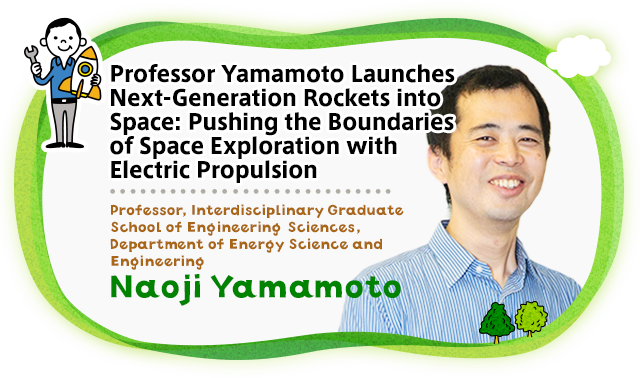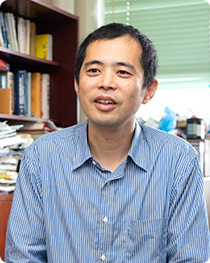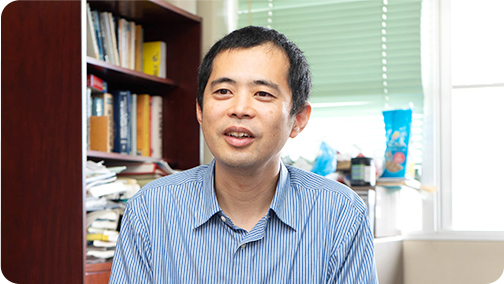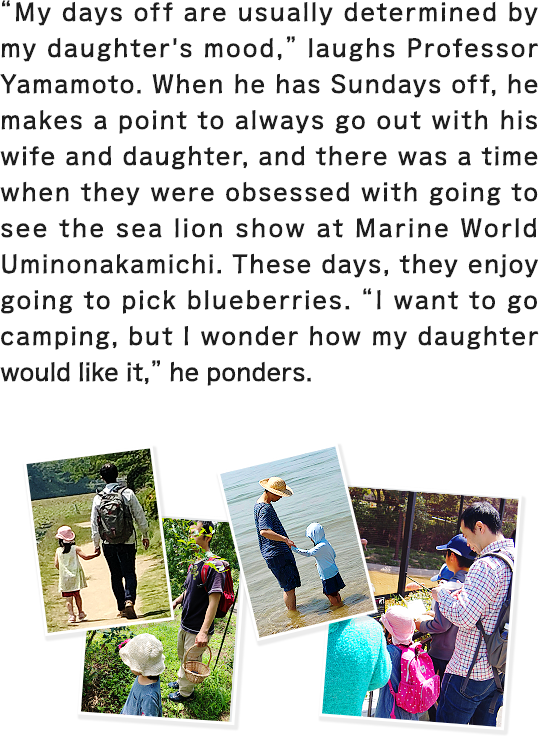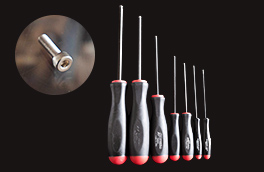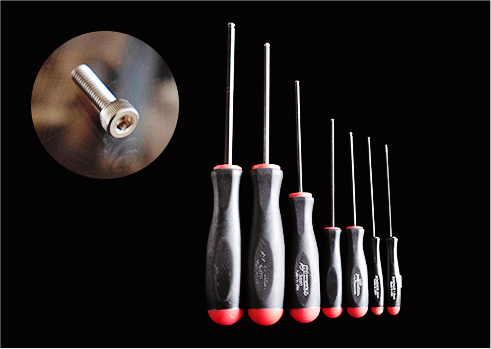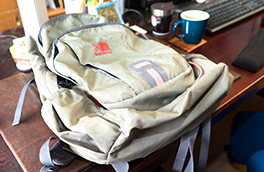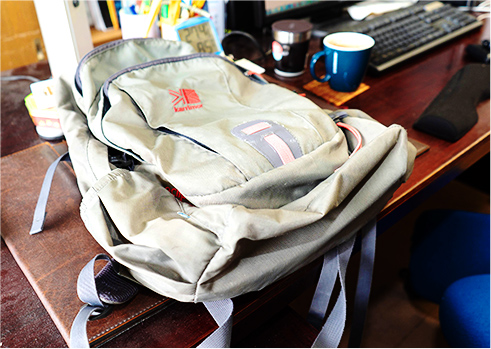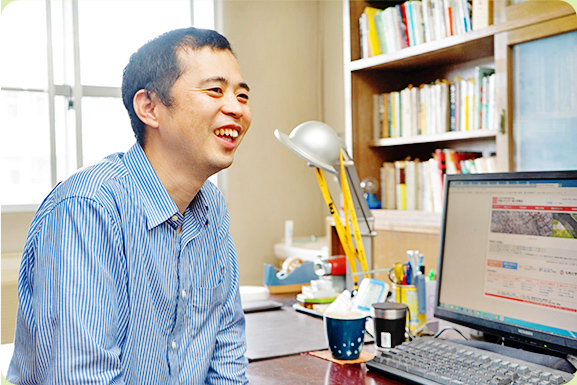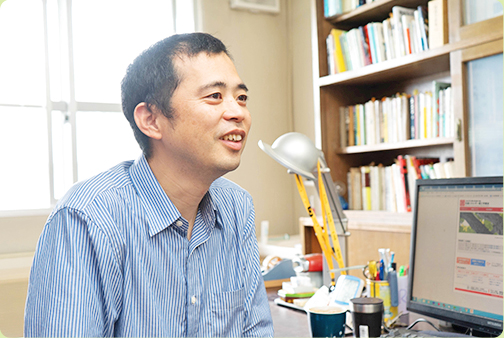 Professor Yamamoto looks young for his age, especially when he gets visibly excited about ion engines.
Professor Yamamoto looks young for his age, especially when he gets visibly excited about ion engines.
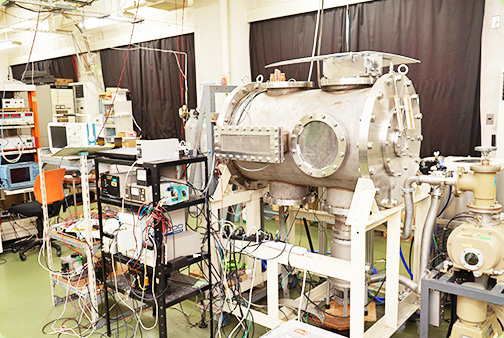 The experimental device that sits in the center of his laboratory are made by technicians from the Department of Energy Science and Engineering (officially the Department of Applied Quantum Physics and Nuclear Engineering) at Kyushu University. Welding and polishing are all done by hand on the order of micrometers, a testament to the high precision equipment Professor Yamamoto requires.
The experimental device that sits in the center of his laboratory are made by technicians from the Department of Energy Science and Engineering (officially the Department of Applied Quantum Physics and Nuclear Engineering) at Kyushu University. Welding and polishing are all done by hand on the order of micrometers, a testament to the high precision equipment Professor Yamamoto requires.
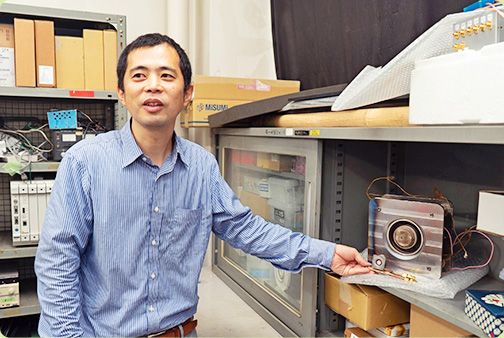 Professor Yamamoto points to an object roughly 30 square centimeters in size. It, too, is a rocket, he says. As rockets become smaller and less expensive, the age of the personal rocket may not be far off.
Professor Yamamoto points to an object roughly 30 square centimeters in size. It, too, is a rocket, he says. As rockets become smaller and less expensive, the age of the personal rocket may not be far off.
 Professor Yamamoto looks young for his age, especially when he gets visibly excited about ion engines.
Professor Yamamoto looks young for his age, especially when he gets visibly excited about ion engines.
Until now, conventional chemical rocket engines on satellites and space probes have used chemical reaction to generate thrust. My interests lie in the research and development of next-generation rocket engines for satellites and probes, namely electric propulsion that use plasma for thrust, which have become known for the prominent role they played in the Japanese Hayabusa mission.
 The experimental device that sits in the center of his laboratory are made by technicians from the Department of Energy Science and Engineering (officially the Department of Applied Quantum Physics and Nuclear Engineering) at Kyushu University. Welding and polishing are all done by hand on the order of micrometers, a testament to the high precision equipment Professor Yamamoto requires.
The experimental device that sits in the center of his laboratory are made by technicians from the Department of Energy Science and Engineering (officially the Department of Applied Quantum Physics and Nuclear Engineering) at Kyushu University. Welding and polishing are all done by hand on the order of micrometers, a testament to the high precision equipment Professor Yamamoto requires.
Electric propulsion technology research began in the 1960s and was successfully implemented in the 1970s. As recent as twenty years ago, however, they were deemed too risky for general use and were only used for projects at the national level, used as prototypes or on the occasional military satellite. In just the last ten years, these engines have seen dramatic progress in terms of research and application, and electric propulsion systems can now be found in over 200 satellites and probes worldwide.
 Professor Yamamoto points to an object roughly 30 square centimeters in size. It, too, is a rocket, he says. As rockets become smaller and less expensive, the age of the personal rocket may not be far off.
Professor Yamamoto points to an object roughly 30 square centimeters in size. It, too, is a rocket, he says. As rockets become smaller and less expensive, the age of the personal rocket may not be far off.
Electric propulsion uses plasma, the fourth fundamental state of matter, which is typically generated by heating a gas to searing temperatures. The heat separates electrons from their atoms and renders them free to move, which creates ions in the process. Plasma can be controlled using electrostatic and electromagnetic force, which means that we can easily transfer energy to ions and electrons. EP uses this electric power to expel very high speed plasma (approximately 20,000 m/s), which results in better fuel consumption. For example, a two-ton satellite currently needs one ton of fuel for orbit transfer, but EPs could deliver the same satellite using just one hundred kilograms of fuel, and less fuel means more room for spacecraft instruments and a reduction in satellite size. As smaller satellites become available, we will be able to share a single launcher, which will have a major impact on cost reduction.
In May 2019, SpaceX successfully launched 60 high-speed broadband satellites equipped with EPs, which were used to adjust, maintain, and raise the satellites’ orbits to 550km, similar to how you would maneuver a drone. These engines are also responsible for the thrust that helps satellites maintain their altitude. Until now, 400 kilometers above the earth was as low as a satellite could maintain its orbit, the inner edge of what is called low earth orbit. With EPs, however, satellites can compensate for atmospheric drag and keep their altitude as low as 200 kilometers above the earth. This makes is more affordable to provide reliable Internet access to remote places in developing nations like those in Africa.
My current research on EPs is geared toward their use on satellites that detect gravitational waves. Using laser measurements and numerical simulations, I investigate the physics behind EP and incorporate any new insights back into engine development. I’m hoping that through countless iterations, I can create even better next-generation engines that will eventually have a positive impact on the world. My mission is to research and develop EPs that meet the current demands of satellites and probes, but as research and innovation speed up across the globe, I am always looking ahead to try to anticipate future needs.

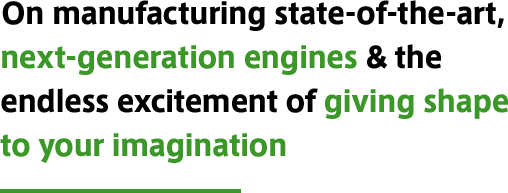
Today, as private corporations and start-ups are launching small rockets and satellites, even universities getting in on the action. I’m drawn to this field because I get to be involved in the most advanced research being done today, standing on the shoulders of giants. It's a big responsibility, but it arouses a curiosity and excitement that outweigh any pressure I might feel.
Research is an endless cycle of failures and triumphs. On average, I probably have two failures for every success. But every failure is an instant opportunity for analysis and feedback that will then lead to an answer. That's one of the attractions of my research. It takes five or six years and dozens of experiments before an engine goes into use, which can be an arduous process, but this research is interesting every step of the way—from taking an idea from zero to one, to testing it, and then going back to the drawing board if it fails. To elaborate, I believe that the joys of a field trip are twofold. The first is the sleepless anticipation the night before as you imagine the next day’s trip. The other is the enjoyment of the field trip itself, where you get to enjoy seeing new things and sharing them with your friends. Research is a lot like a field trip in this regard—with feelings of anticipation before an experiment and the surprise and shared excitement you feel during and after it, only to repeat in an endless cycle. [laughs] That excitement is what keeps me going day after day and is a real joy of manufacturing, be it engines or otherwise.

![]()




